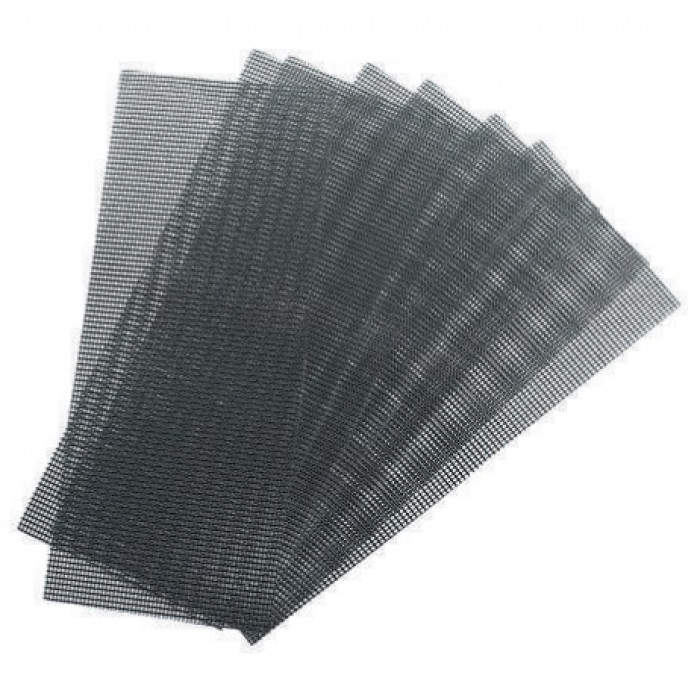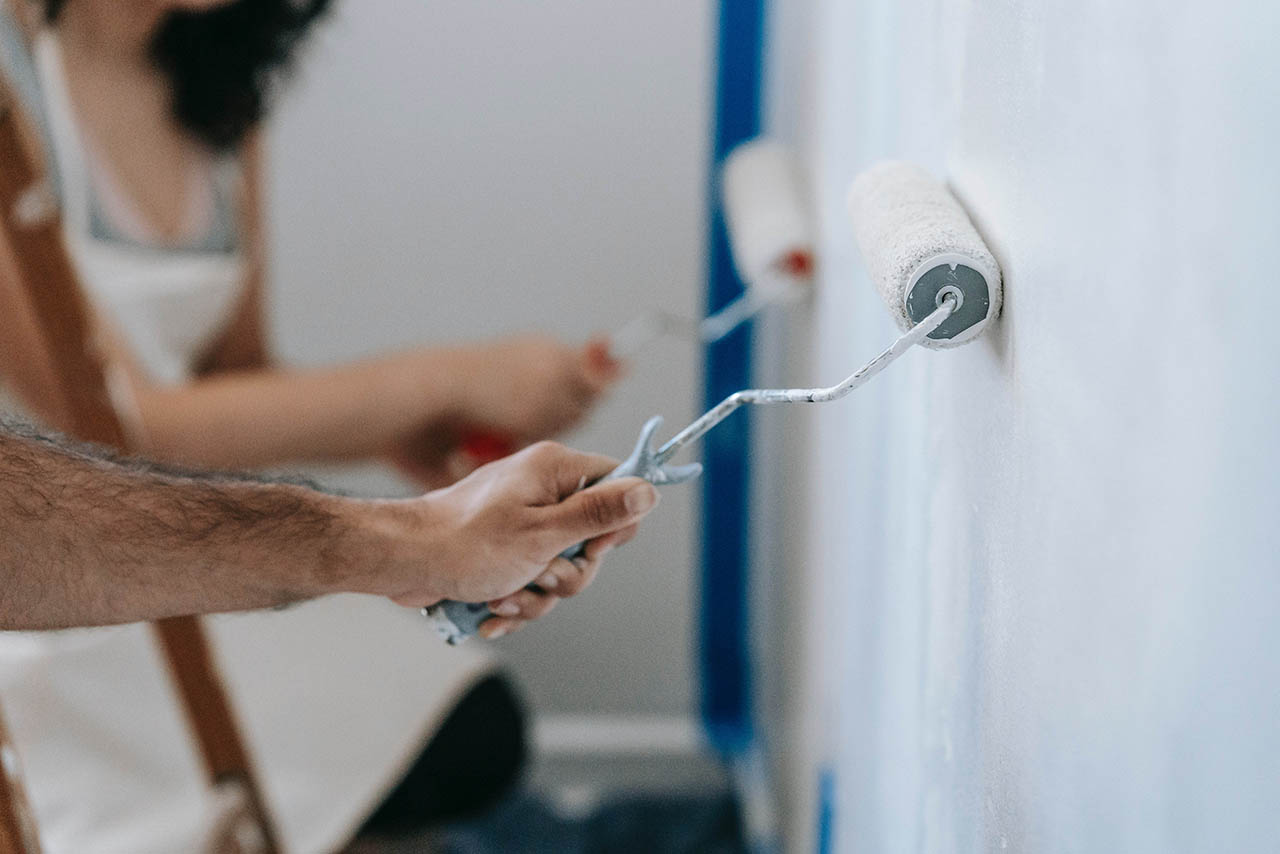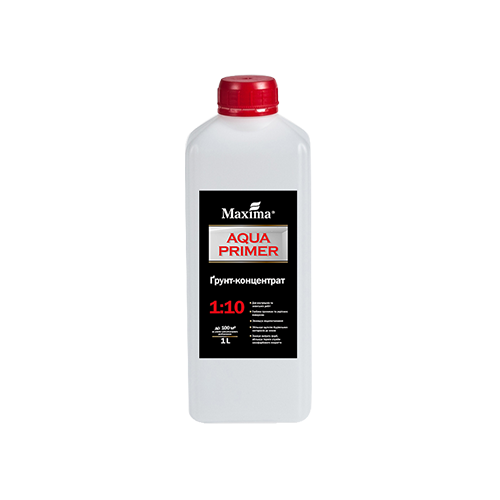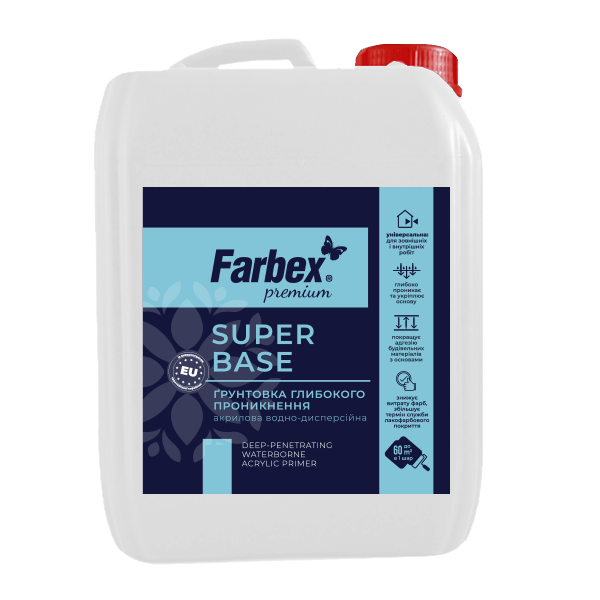What does a paint primer do?
A primer is an important and obligatory stage before wall coating, applying a putty or plaster or setting the wallpapers. The primer penetrates the walls, fills in micro cracks and fixes small particles and as a result, you get a hard base and even surface. Besides, priming improves adhesion to the surface, lessens consumption of the product and increases the life period of the finishing coating.
A primer can be divided into:
- A primer,
- A primer-concentrate.
Aqua Primer
Concentrated primer 1:10
Super Base
Deep penetrating water dispersion acrylic primer
Primer
A deep penetrating waterborne acrylic primer Super Base TM Farbex is intended for hardening the surfaces and improving adhesions before various finishing works indoors and outdoors. You can guess from the product's name, that it penetrates deeply into the surface and enhances the quality of the coating. We recommend applying the primer before coating the surface with water-based paints, wallpapering or applying decorative coatings. The drying period shall be not less than 2 hours.
Concentrated primer
Concentrated primer 1:10 Aqua Primer TM Maxima hardens the porous surface, levels its absorbing property and can be used for a large area. It is intended for various mineral surfaces indoors and outdoors and it can be diluted with fresh water in ratio:
| Dilution | Sphere of application | The application rate of the concentrated primer |
| Without dilution | NOT INTENDED | |
|
1:4 |
If the surface is extremely fragile and crumbling |
20-30 g/m² |
|
1:6 |
Very fragile, porous and easy absorbing surfaces: gas concrete, foam concrete and alike. |
15-20 g/m² |
|
1:8 |
The surfaces with moderate absorbing properties, plaster, gypsum boards and alike. |
12-15 g/m² |
|
1:10 |
Weakly absorbing surfaces: stone, concrete, brick and alike. |
10-12 g/m² |
Basically, it is the main difference between a concentrated primer and a usual primer
The surface preparing and priming
Remove contaminations and old coating from the surface. Existing efflorescence, fragile and dirty areas shall be cleaned with a metal wire brush (a spatula) or with a polisher. Then remove the dust.
If the surface has cracks, dints and other defects, you shall correct them with a plaster or a putty. Then polish the corrected surface and clean it of dust.
Protect areas, which are not going to be treated, with masking tape,
It is recommended to apply a primer or a concentrated primer on a dry surface with a brush, a roller or a spraying gun.
Work at the temperature of air and the surface from +5 ºС till +35 ºС and relative air humidity up to 80%.
Do not prime under direct sunlight, strong wind, frost and precipitation. The undercoated surface shall not be affected by precipitation and subzero temperatures until the surface is covered with a finishing coating.
All subsequent works shall be performed not before 4 hours after applying the last undercoating layer.
However, there are some cases when a primer is applied unevenly and runs from the surface. The only option to avoid such a situation is to find an optimal paint tool and provide an even application according to the consumption recommendations. First, try to apply the primer on a small area. If you like the result, apply it on the whole surface. If you apply too much primer on the surface, the surface can get the so-called "glass effect", in other words, the glossy effect. It is not good for the adhesion of subsequent coats of paint products.
If such a situation has already happened, use sandpaper or abrasive mesh. We recommend you use abrasive mesh for walls because it is more effective for this work and pores don't clog with abrasive dust.

- 16.08.2023


